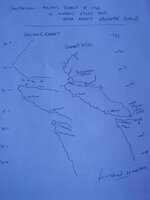Cash
Jr. Member
- Aug 6, 2007
- 29
- 4
- Detector(s) used
-
Aquapulse 1B
XP Deus
- Primary Interest:
- All Treasure Hunting
Hi all, would anyone have an idea as to the possibilities of pre-1800 wrecks off Tofino - so much washes up on the beaches from Japan and there was a big trade from Japan Im not sure if around Tofino I know of wrecks (fur traders) and other 1800 + wrecks on the coast all the way down to Victoria, I was curious if anyone had opinions or ideas as the the feasiblity, a rich vessel does not always have to have been Spanish or a nation of note. Any clues? thanks Cash


 ?? thanks
?? thanks not ship wreck. look on shore for evidance, like indian middens,if the spanish or who ever was anchored for long periods of time, the garbage is tossed over board.
not ship wreck. look on shore for evidance, like indian middens,if the spanish or who ever was anchored for long periods of time, the garbage is tossed over board.
 Cash
Cash
